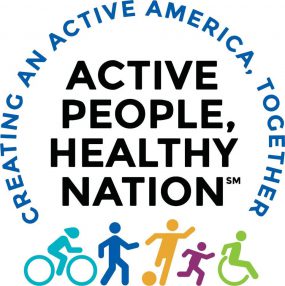Definitions
Definitions of terms related to increasing physical activity through community design.
Active transportation refers to any self-propelled, human-powered mode of leisure or utilitarian transportation, such as walking, rolling, or bicycling.
Activity-friendly districts are land use and zoning strategies to encourage mixed uses and closer proximities. Examples include SmartCode, New Urbanist Districts, Pedestrian-Oriented Districts or Developments (POD) and Transit-Oriented Districts or Developments (TOD), Traditional Neighborhood Districts or Developments (TND), or Smart Growth Districts.
Activity-friendly routes include pedestrian, bicycle, and public transit transportation systems that offer a direct and convenient connection with everyday destinations, offering physical protection from cars, and making it easy to cross the street. These can include crosswalks, protected bicycle lanes, multi-use trails, and pedestrian public transit bridges. They are often desirable, useful, and attractive.
Complete Streets policies support routine, context sensitive, design and operation of streets and communities that are safe for all pedestrians, regardless of age, ability, or transportation mode. Key features include sidewalks, protected bike ways, special bus lanes, comfortable and accessible transit stops, frequent crossing opportunities, median islands, accessible pedestrian signals, and curb extensions.
Everyday destinations are places people go frequently. Some examples include homes, workplaces, grocery stores, schools, libraries, parks, restaurants, cultural and natural landmarks, or health care facilities.
Form-based codes provide an alternative to conventional zoning that regulates land use based on the separation of uses, such as commercial or residential. Form-based codes focus on the form of buildings and address the relationship between building exteriors and the public spaces, the form and mass of buildings in relation to one another, and the scale and types of streets and blocks.
Incentives for activity-friendly project evaluation are administrative procedures that prioritize investments in activity-friendly routes as part of Statewide Transportation Improvement Programs or metropolitan regional Transportation Improvement Program. These programs are short-term plans that include projects selected as federal transportation investment priorities. They flow from projects included in the long-term transportation plan (see master plans), which is a longer-term regional and statewide transportation planning process spanning decades.
Inclusive fare collection systems are designed to serve transit riders who might not have access to credit cards, debit cards or smart phones, which may be necessary for cashless transit fares. An example of an inclusive fare collection system is simple cash collection.
Increasing physical activity through community design is planning and designing communities with activity-friendly routes that offer a direct and convenient way to actively reach everyday destinations.
Land use refers to how land is used and what is built on it. Land use policy goals include mixed land use (such as neighborhoods that combine restaurants, offices, housing, or shops), increased residential density (such as sustainable, compact development with housing options that include smaller and multi-family homes), community destinations that are accessible and close to each other, and access to public parks or public recreational facilities.
Master plan is an official document adopted by a local or regional government that serves as a guide for making land-use changes, preparing capital improvement programs (for example active transportation, parks, trails, and greenways), and determining the rate, timing, and location of future growth. Also called a general plan or comprehensive plan.
Vison Zero sets clear goals to achieve a shared goal of zero fatalities and severe injuries for people walking and biking, as well as other road users.

